An incarcerated farm worker shovels cow feed. Over CAD$36 million has been spent to create this prison dairy research program, to “provide offenders with the opportunity to work with livestock.” Joyceville Institution, Kingston, Ontario, Canada, 2025.
Jo-Anne McArthur / We Animals
Photographer: Jo-Anne McArthur
Do prison farms and slaughterhouses prepare inmates for life on the outside, or are they unnecessary and even dangerous programs? After visiting two Ontario correctional facilities, I left without mixed feelings.
It was a rare and informative opportunity to see inside a prison and its inmate programming. I was there as part of a visit organized by researcher Calvin Neufeld and MP Scott Reid, who have long been interested in Canadian prison farms and the millions of federal tax dollars being pumped into these programs, which include dairy production and the care of housed animals such as cows, pigs, and chickens.
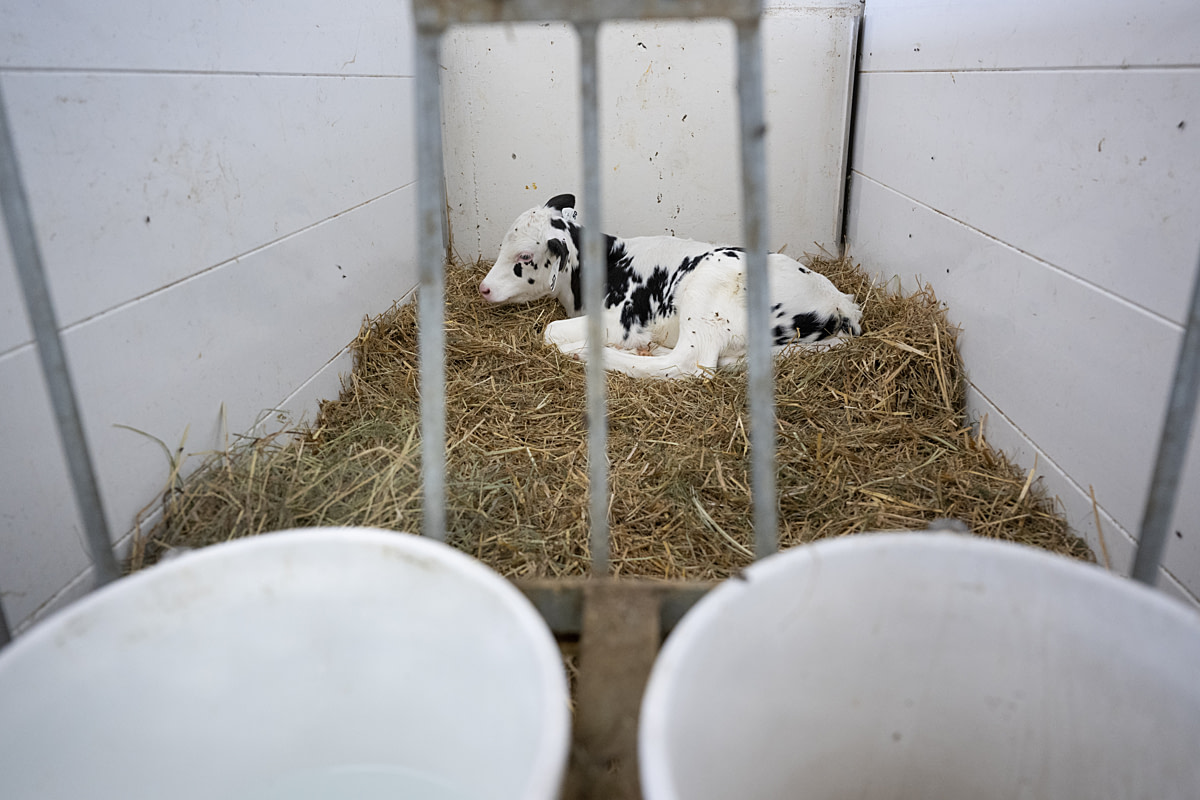
A calf spotted with flies lies alone in an isolation pen at a Canadian prison farm. Shaun Shannon, who worked in the former dairy at Collins Bay Institution, says that calves and their mothers would call to each other for days when they were separated. In this calf barn, out of earshot from the prison’s new dairy research barn, there is silence. Joyceville Institution, Kingston, Ontario, Canada, 2025.
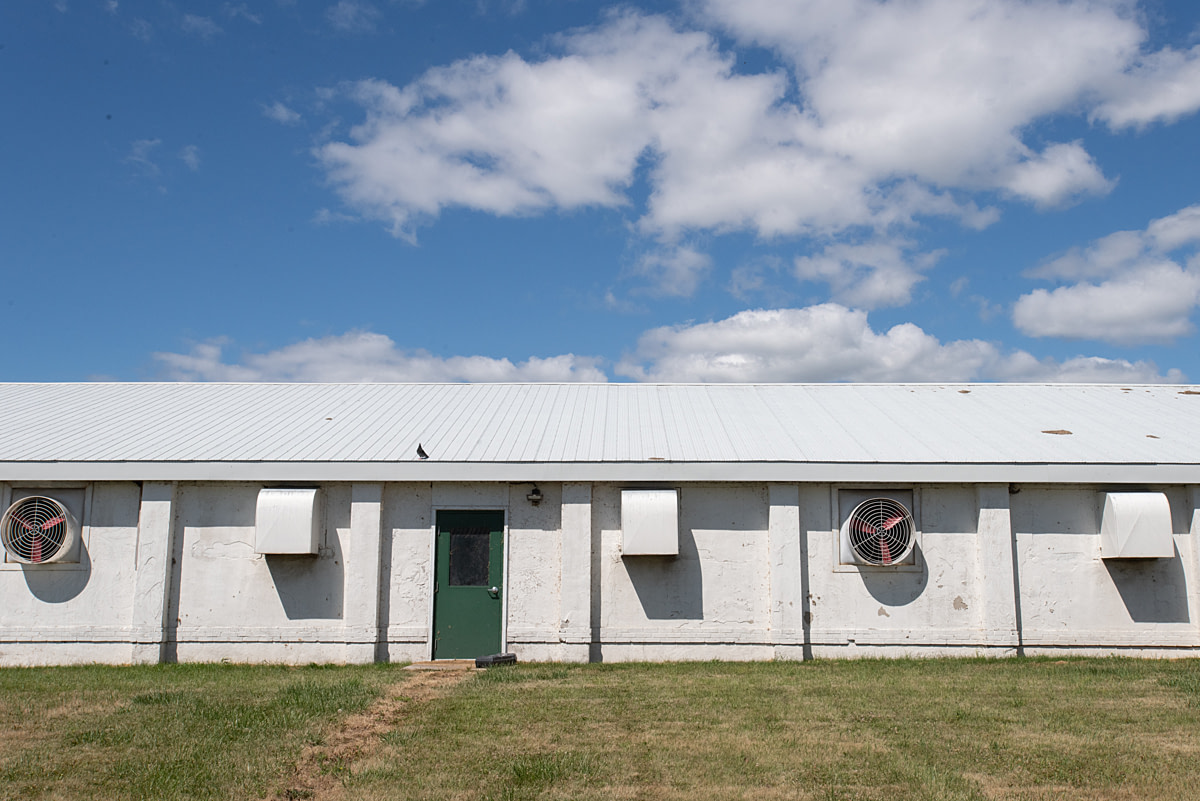
The Correctional Service of Canada intended to use this former chicken barn to house hundreds of goat kids to seed an industrial goat dairy operation at Joyceville Institution. Since the controversial goat program was paused in 2021, the barn sits empty and unused. Collins Bay Institution, Kingston, Ontario, Canada, 2025.
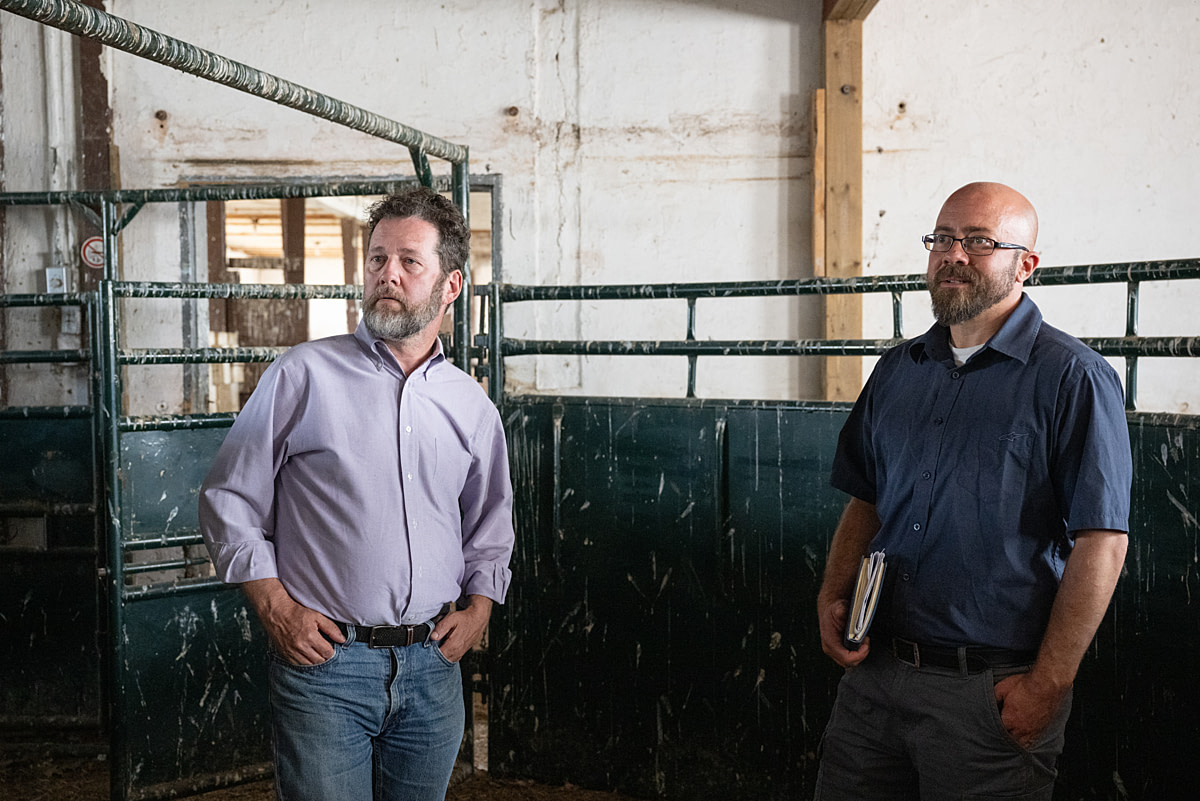
Member of Parliament Scott Reid, left, and prison farm researcher Calvin Neufeld, right, visit the holding pen to the now-shuttered prison abattoir. Joyceville Institution, Kingston, Ontario, Canada, 2025.
I watched prisoners working the barns, mostly raking and feeding. They ended up there because of convictions for crimes they committed, and the farmed animals seemed to me like secondary inmates, but innocent—captive within farming practices but also within a prison system. The inmates would eventually leave, but these animals were being incarcerated for commercial use and, eventually, slaughter. I wondered what they did to deserve this imprisonment.
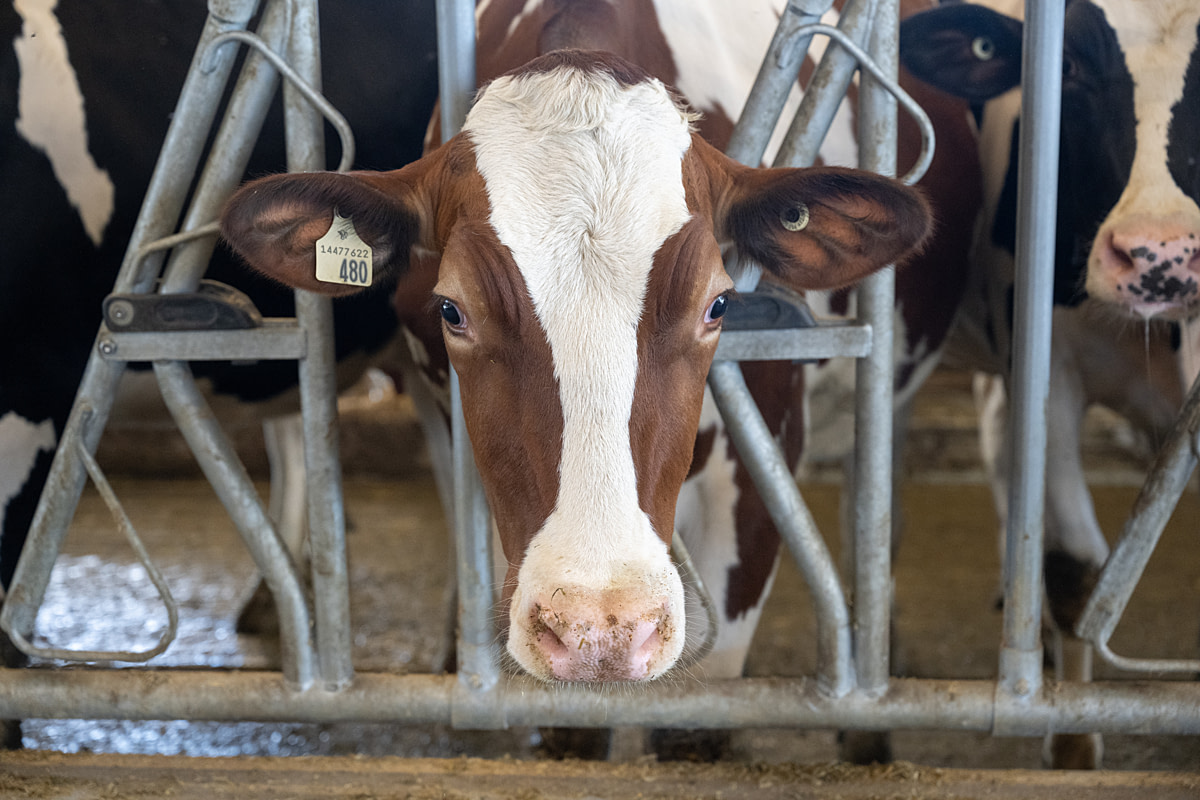
One of 88 dairy cows involved in a McGill University research study at a Canadian prison farm. The new dairy research barn cost Correction Services of Canada more than CAD$20 million and took over three years to build. Joyceville Institution, Kingston, Ontario, Canada, 2025.
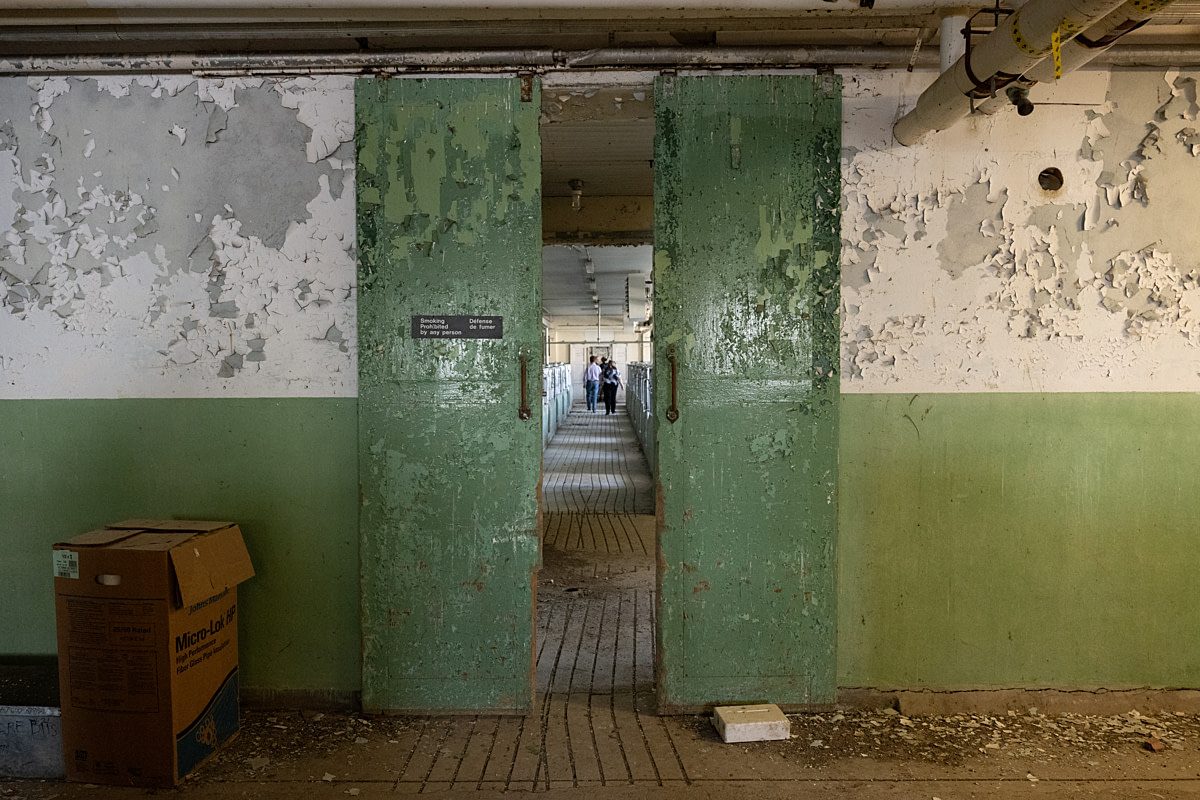
Member of Canadian Parliament Scott Reid tours the former cow maternity ward at a prison dairy farm with his office manager Sandra Finigan. The cost of demolishing the old dairy barn is estimated at CAD$650,000. Collins Bay Institution, Kingston, Ontario, Canada, 2025.
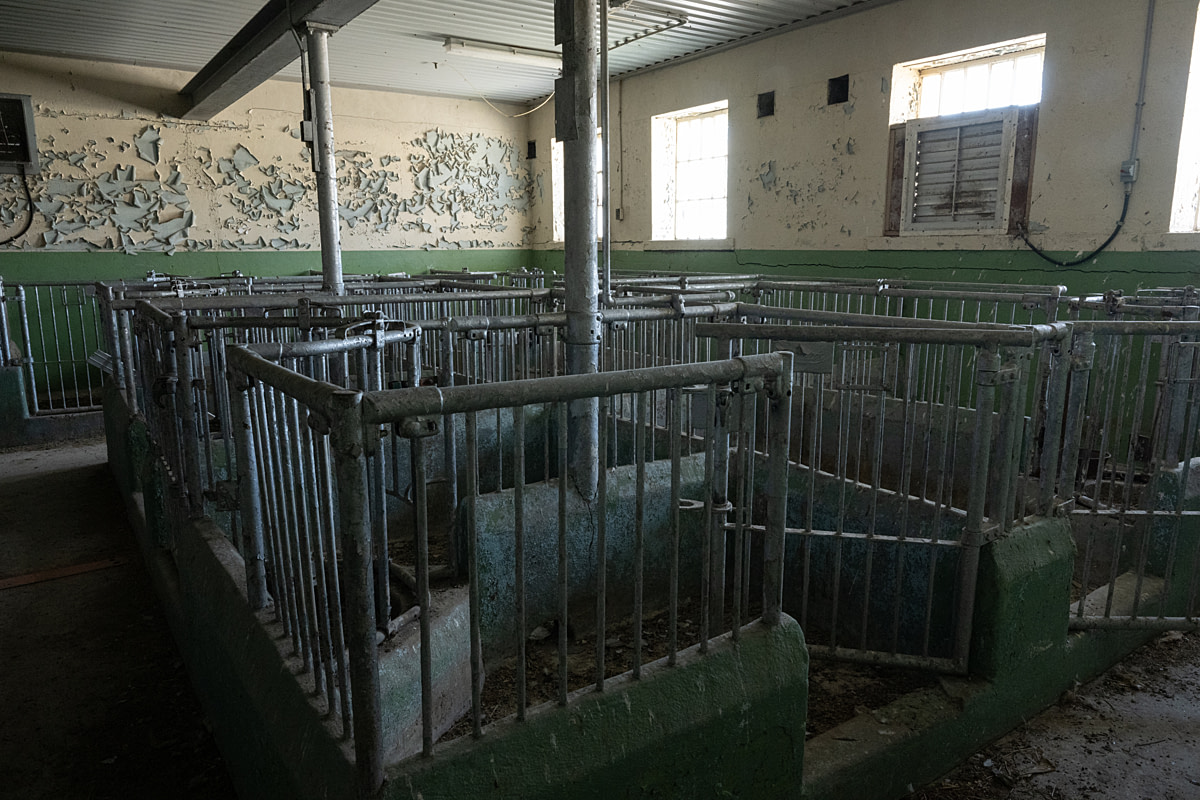
Pens bearing a striking resemblance to prison cells formed the nursery for newborn calves isolated from their mothers at a prison dairy that closed in 2011. Collins Bay Institution, Kingston, Ontario, Canada, 2025.
I wondered a lot of things. Should the Canadian government be investing tens of millions of tax dollars in farming animals when local farmers are already set up to do so? And, how many inmates would benefit from the skills learned? Outside one barn, I saw a dozen inmates constructing a small shed, learning carpentry. Wouldn’t this trade, or others like it, benefit people re-entering society in a much broader way?
I wondered whether farming animals in prison increased or decreased compassion in inmates. For those who genuinely feel empathy for animals, it can be both a blessing and a curse. Being near animals can be soothing and uplifting, but what of the act of using them as production units, separating mothers from their calves, and eventually sending them to slaughter? A sad ending for the animals, and for the inmates who see them off. Like veterinarians or soldiers forced into morally conflicted actions, they may feel a sense of moral injury.
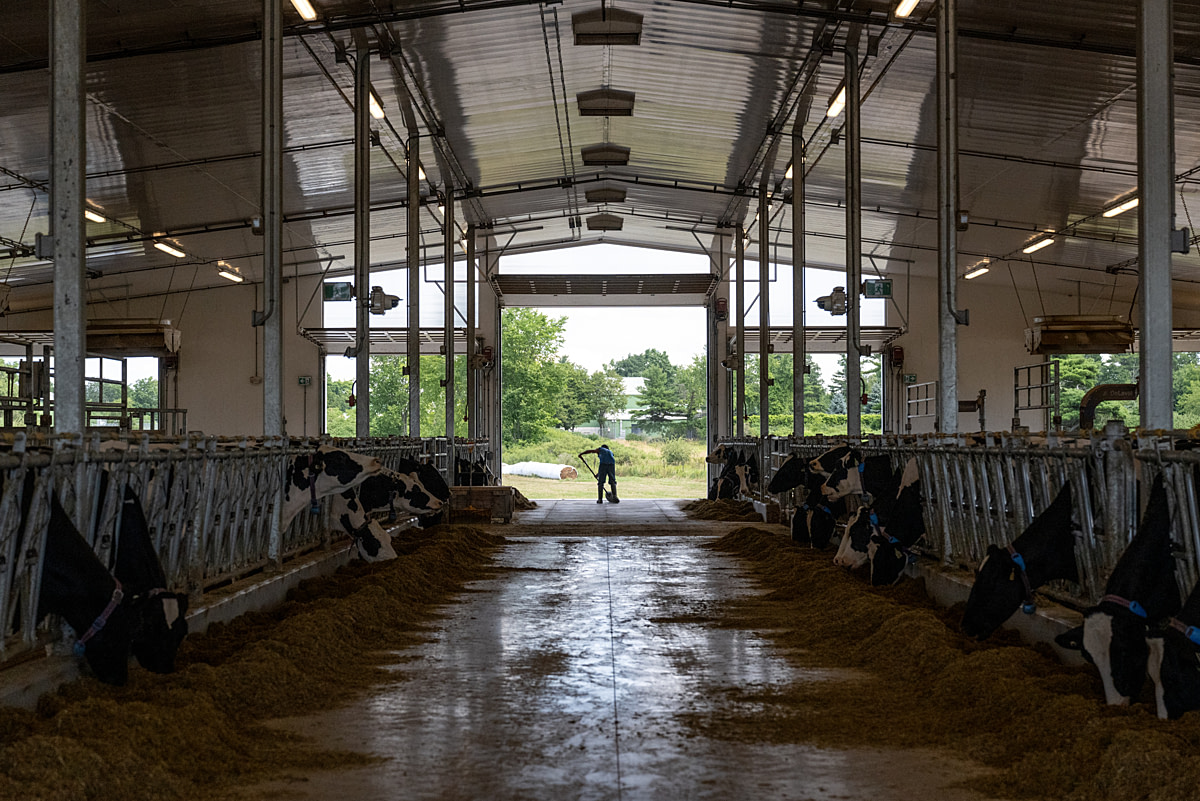
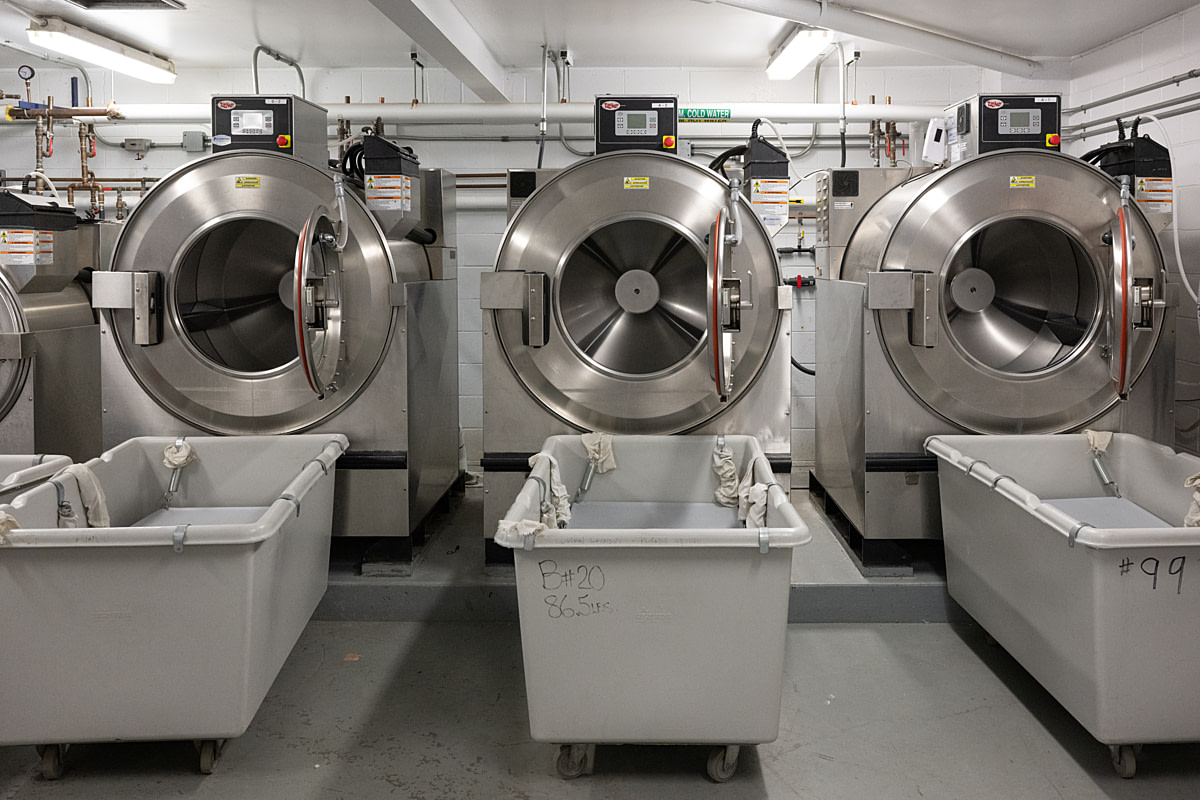
A building formerly labelled “Pen Farm” was converted into a laundry following the 2011 closure of Canada’s prison farms. The high volume of water consumed by dairy cows made the infrastructure conversion easy, and the laundry is expected to be more profitable than the former dairy, which operated at a loss. Collins Bay Institution, Kingston, Ontario, Canada, 2025.
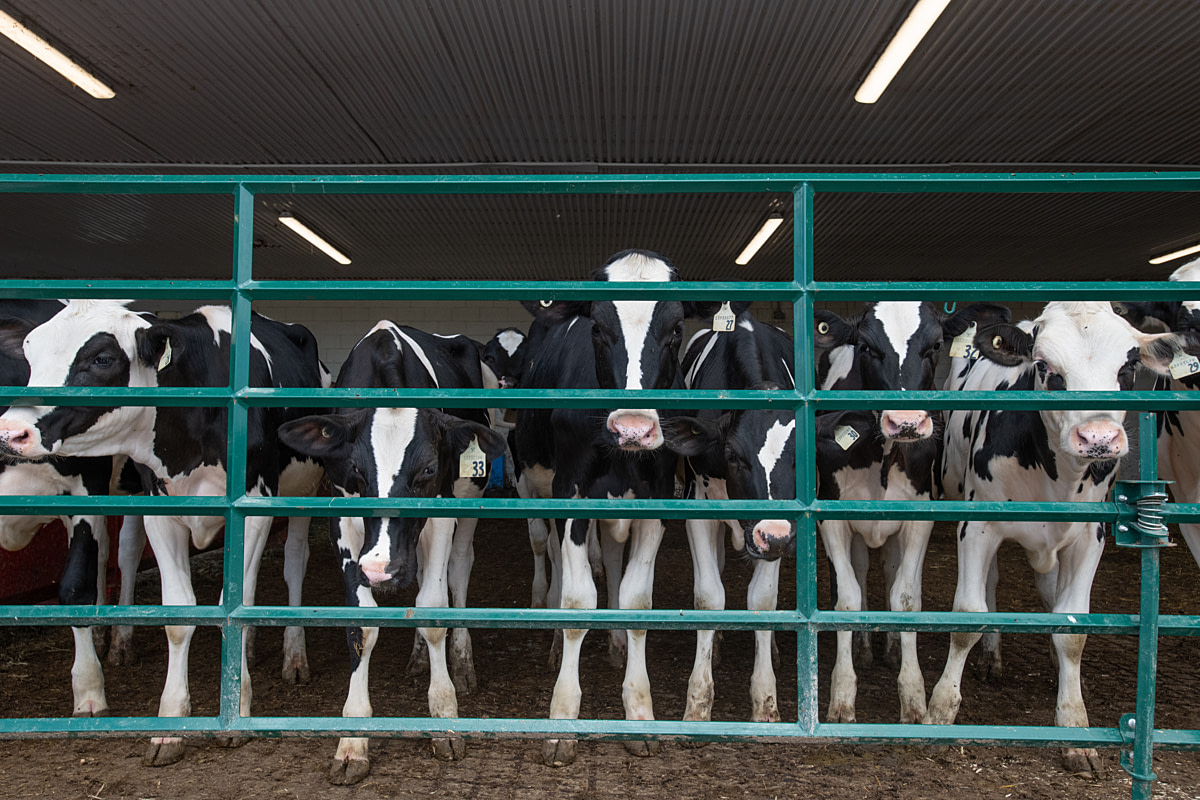
Did the prisoners feel a parallel in exploitation and captivity between themselves and the animals? Both incarcerated and having to work, potentially on something they do not want to do? I wondered whether this work furthered any resentment or trauma for the inmates.
Many people can decide not to take part in harming animals. When prison programs involve raising and slaughtering animals, and inmates have to work in these roles, does it desensitize them and normalize harm? Could this type of prison work exacerbate violent tendencies instead of curbing them?
Incarcerated people at Joyceville and Collins Bay penitentiaries are paid under 46 cents an hour to work on these federally funded prison farms.
Low wages, high costs, hidden cruelties.
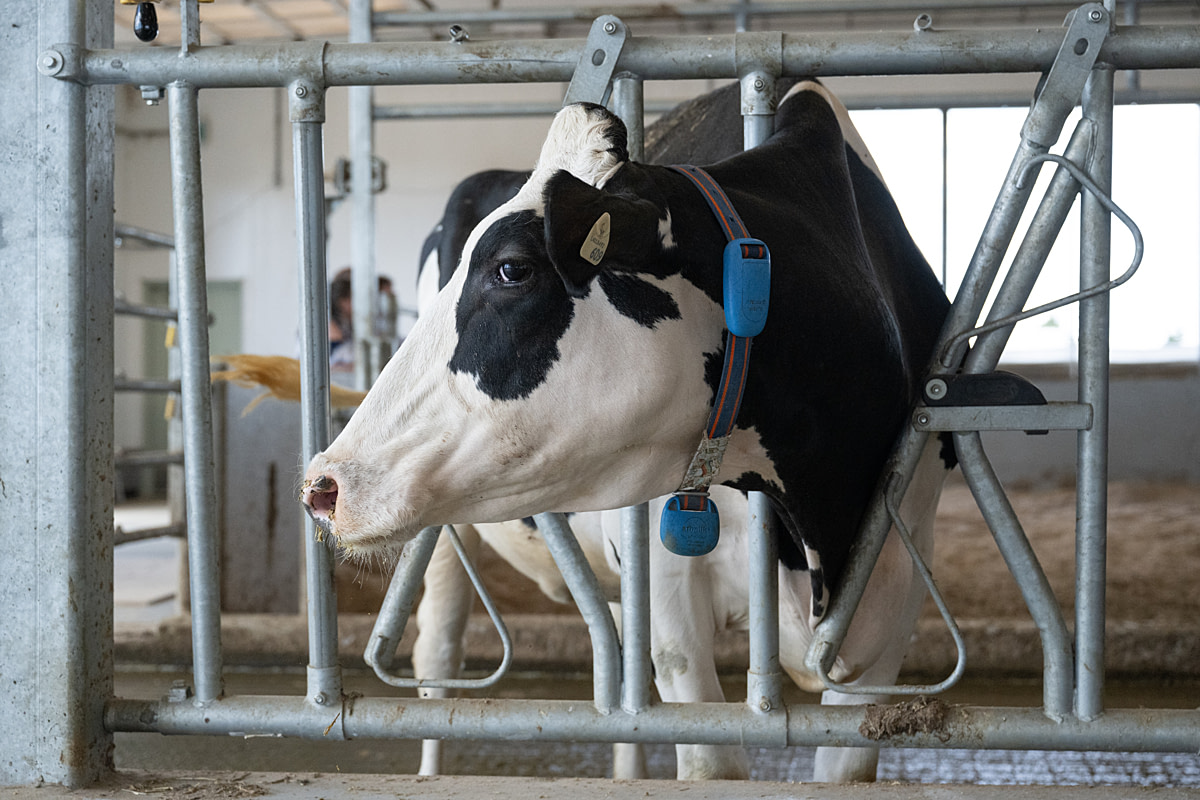
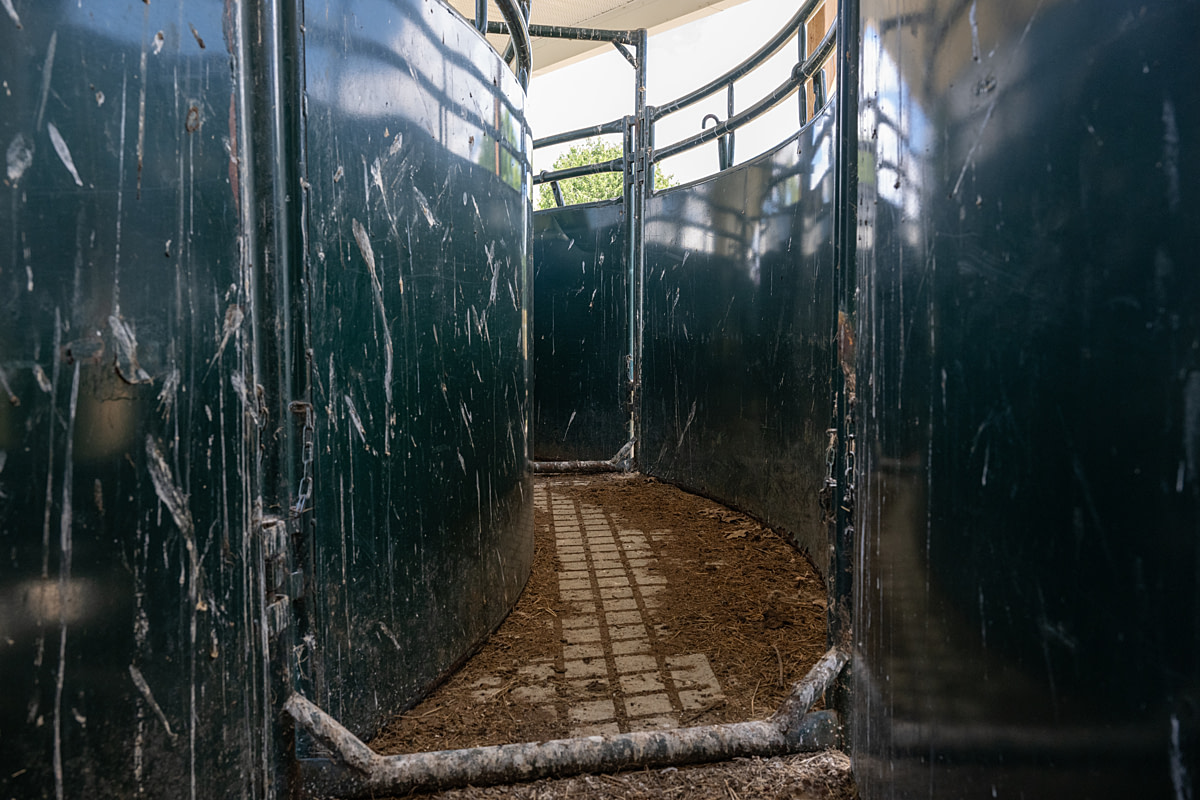
A cattle chute connects the beef cattle barn to a former abattoir at a Canadian prison farm. According to records obtained by Evolve Our Prison Farms, the abattoir was built in 1958 to produce meat for prisons in Ontario and Quebec, but it was commercialized in 1995 in a public-private partnership with Wallace Beef. The company used prison labour to slaughter animals for hundreds of farms until the abattoir closed in 2022. Joyceville Institution, Kingston, Ontario, Canada, 2025.
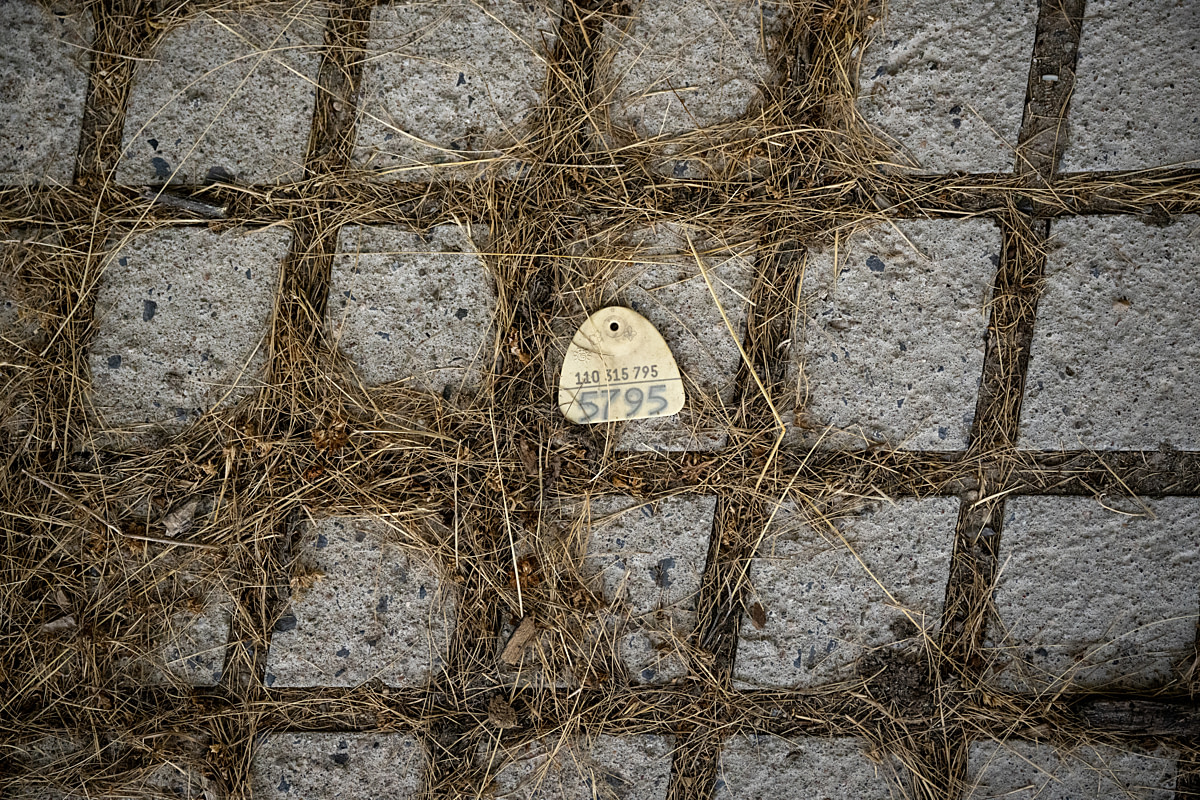
An ear tag severed from the ear of an animal lies on the floor of a former abattoir at a Canadian prison. This piece of plastic is a solitary remnant of the countless animals who took their last steps here in the 64 years of slaughter at the prison’s abattoir. Joyceville Institution, Kingston, Ontario, Canada, 2025.
As I watched the penned cows and photographed lone calves in crates, I wondered: Do Canadians, or does anyone really, want to drink prison milk?
Where there is doubt, the prison systems should opt out. If farming animals in prison has the potential for maintaining cycles of harm, or for not preparing inmates for compassionate lives on the outside, it’s best to invest in trades that can get the incarcerated to where they need to be.
This rare access reveals the stark realities of Canada’s prison farms: inmates shoveling feed, derelict barns, and a shuttered abattoir that hints at the system’s violent history. While prisons present this as vocational training, these photographs raise hard questions about whether public funds should support programs that force people and animals into cycles of captivity.
Learn more about the work of Evolve Prison Farms.
Photographer: Jo-Anne McArthur
Low wages, high costs, hidden cruelties. Explore and download these visuals and more via the We Animals Stock Site.


